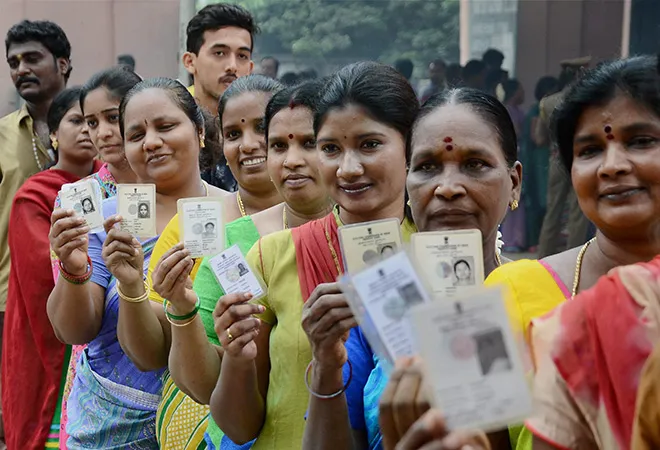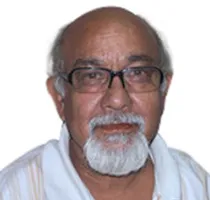-
CENTRES
Progammes & Centres
Location
The nature and complexity of the next government would either be a confirmation of the thesis that politicians can read the pulse of the people, or that the electorate can deceive them.

Notwithstanding tall claims of top BJP leaders of a clear majority, or even surpassing the 2014 Lok Sabha polls mark of 282 parliamentary seats — the confidence with which some opposition leaders have begun to explore the possibility of forming a non-BJP government reflects that the outcome of the general elections is going to be tight.
Invariably, or in majority cases, a seasoned politician is known for his/her radar-like ability to read the pulse of people. Precisely of this inherent quality among Indian politicians, they are found switching party loyalties.
In this context, it is worth recalling a conversation between Congress president Rahul Gandhi and couple of media personalities inside the Parliament House in 2013-14. At the time, Rahul Gandhi confided that his party was going to lose the 2014 electoral battle — and that he would rather like to focus on the 2019 Lok Sabha polls.
Lately, the Andhra Pradesh Chief Minister Chandrababu Naidu and his Telangana counterpart K. Chandrashekhar Rao (KCR) have begun to evolve an understanding of a possible government formation.
The shape of the next government will be determined by the exact number of seats that each party — including the two main national parties — eventually have. Yet, a possibility of a non-BJP government — whether a non-Congress government, or not — cannot be entirely ruled out.
While KCR has been trying to form a federal front where the BJP and non-Congress parties will be able to contest hard with the two national parties, Naidu is eager to move towards an early coordination of an anti-BJP formation that would include the Congress.
Leaders like the West Bengal Chief Minister Mamata Banerjee and former UP chief ministers and leaders of the SP and BSP — Akhilesh Yadav and Mayawati — are keen on waiting for the final tally of seats that each party has. They have called for a meeting before 23 May. The leaders want to be sure of their electoral strength, neither of them showing how strong they are going to be when the results are declared.
The case of the West Bengal Chief Minister is particularly uncertain and complex as per the media — as well as the BJP that is claiming to win more than half of the total 42 parliamentary seats in the State. As a result, Mamata Banerjee prefers to wait in order to formulate her future strategy.
BSP chief Mayawati has sharpened attacks on Prime Minister Narendra Modi. It is indeed interesting to note Mayawati’s sharp response to PM Modi’s suggestion that she withdrew support of the Congress in Rajasthan, indicative of her post-poll preference.
At the same time, Rahul Gandhi’s admiration of the BSP chief in an interview is also signaling that a post-poll understanding between the two parties is very much possible. The Congress has been exercising utmost caution while dealing with the BSP despite Mayawati’s attempts to rebuff the Congress party’s move to strike a pre-poll understanding.
On the other hand, even the ruling party leaders have been dropping hints that the BJP is not going to get a clear majority — and that it would need the support of more parties to form a government. The clearest indication to this effect came from none other than the Prime Minister, who while speaking against the alliances, calling them in stable, has also claimed to possess “the art of running coalitions.”
All these efforts towards a possible coalition, as well as the BJP leaders’ occasional slip of tongue admission of not getting a clear majority, point to three possible scenarios in which the ruling party still be leading the next government.
Firstly, in case the BJP-led NDA fails to get a clear majority and falls short of two dozen odd seats to magical figure of 272, the party would get support from TRS, the YSR Congress or few AIADMK MPs. Even the BJD — in a fervent hope of getting substantial central assistance to rebuild cyclone Fani hit Odisha — may extend support, either by joining the government or from outside.
Secondly, if the BJP falls short of the majority by a margin of 80-100 seats, the BJP may find difficult to manage numbers; though with its resources and management skills, it may still form a government.
Thirdly, if the BJP falls short of 100-120 seats, the BJP would have to let go of Narendra Modi as the prime minister — replacing with either Union Ministers Nitin Gadkari or Rajnath Singh. The BJP would need to strike many compromises but it would try its best to control the levers of power.
On the other hand, even the ruling party leaders have been dropping hints that the BJP is not going to get a clear majority — and that it would need the support of more parties to form a government. The clearest indication to this effect came from none other than the Prime Minister, who while speaking against the alliances, calling them in stable, has also claimed to possess “the art of running coalitions.”
The nature and complexity of the next government would either be a confirmation of the thesis that politicians can read the pulse of the people, or that the electorate can deceive them. A third front government, supported by the Congress or the BJP from outside, is thinkable and can’t be dismissed.
The views expressed above belong to the author(s). ORF research and analyses now available on Telegram! Click here to access our curated content — blogs, longforms and interviews.

Satish Misra was Senior Fellow at ORF. He has been a journalist for many years. He has a PhD in International Affairs from Humboldt University ...
Read More +